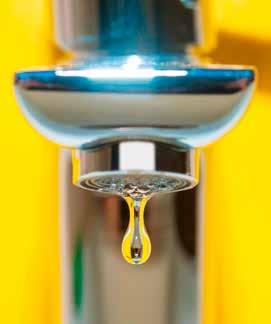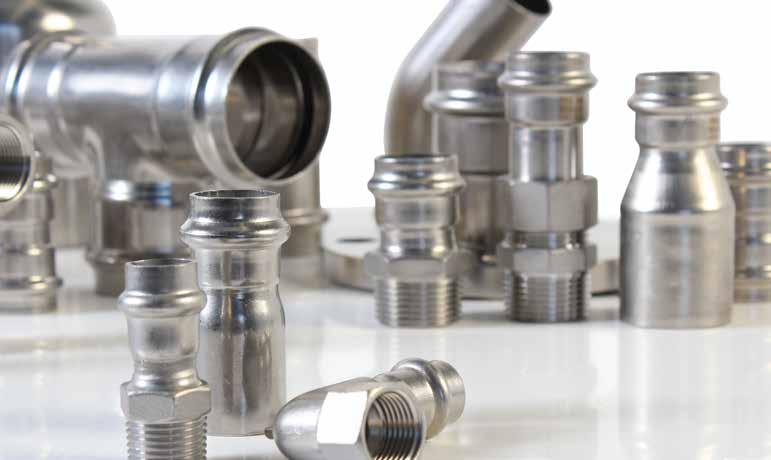On the tools PIPE SYSTEMS
TECHNICAL THEME
Is it worth the risk? Making piping system purchasing decisions on cost alone is a risky strategy. A true cost comparison should include factors such as installation time, jointing options and life span, as Dux explains.
S
pecifiers make decisions regarding products installed behind the walls of our houses every day, based on a number of factors—but increasingly cost is becoming the sole criteria. With a mad rush to get the lowest dollar per metre and/or fitting cost possible, what is the risk to our industry? We need to look at our piping systems holistically rather than by cost alone, as the installation speed, long-term reliability and supplier reputation can outweigh the short-term cost savings, especially when the unexpected occurs. According to the PBPSA* a true cost comparison between piping systems should include installation time, jointing options, life span and Standard Dimension Ratio (SDR) rating.
Specifier considerations If we ignore cost for now, what should we look for in a system? The answer is a technically sound material that has proven reliability, is easily installed and is backed up by a robust warranty process that actually means something. Always investigate manufacturer warranties thoroughly, and in particular the conditions on which a warranty could be deemed null and void.
Advantages of PB-1 Polybutene (PB-1) ticks all the boxes above, and with continued development has proven to be tough, flexible and able to withstand the rigours of our modern plumbing system installations and the demands placed on them. Technically, PB-1 has a number of advantages over more rigid materials.
1. Reduced water hammer and system noise – Water hammer is caused by the mass and velocity of pressurised water coming to an abrupt stop when a valve or tap is closed. This can shock the system, reverberating throughout a house and causing damage, which can result in damaged appliances if left unchecked, whilst also resulting in system noise. The
030
nzplumber
Flexural Elasticity Modulus (MPa) Method ISO 178 PB-1
PE-X
PE-RT
PP-R
PVC-C
450
600
550-650
800
3500
Sound velocity of materials Density (g/cm3)
Elastic Modulus (MPa)
Sound Velocity (m/s)
Soft Rubber
0.90
90
320
PB-1
0.93
450
620
PE-X
0.95
600
800
CPVC
1.56
3,500
2,350
Copper
7.2
110,000
3,900
Above: As these tables show, the lower elasticity modulus and reduced wall thickness of PB-1 result in more muffled system noise than other pipework materials as water heats and cools.
lower elasticity modulus and reduced wall thickness of PB-1 results in better performance and muffled system noise than other pipework materials during both heating and cooling periods.
2. Energy efficiency – Polybutene has a high thermal insulation value compared with other materials, being 0.22W/(m.K) (Watts per metre-kelvin. This means that, during times of low use, the ambient temperature in the line will remain for a longer period.
3. Standard Dimension Ratio (SDR) – Specifiers should consider the SDR of a piping system as another measure of technical performance. SDR is a method of rating a pipe’s durability against pressure. The SDR describes the correlation between the pipe dimension and the thickness of the pipe wall. The thinner wall SDR of PB-1 is important for the following reasons: Less material for the same pressure capability Less weight per metre of pipe Lower outside pipe diameter for the same performance Larger inside area for the same outside diameter providing: • higher flow rate at the same pressure • lower pressure loss, requiring less energy to run a system or pumps with lower capacity.
Save time, save money Specifiers should consider other technical performance measures, such as pressure loss, the risk of use of O rings and recyclability, as well as ease of installation, quality control measures and warranty processes, before selecting a system with the lowest overall risk to install—as well as being competitive from a cost-ofinstallation perspective. In terms of ease of installation, installation time, stock availability (both supplier in-stock and availability in plumbing merchants), training and quality are just a few of the major considerations. Installation time should consider not just the speed, but also the ease and speed with which an installer can check that the fitting has engaged with the pipe, and the ease of using the required tools. As labour is generally the highest component of a plumbing company’s expense for residential projects, saving time generally results in saving money in wages, which could be a far greater saving than material cost savings. Whilst the cost of a system might be a factor, it is important to consider all these other elements, as the overall cost to a project or reputation could end up being much higher than any short-term savings— is it worth the risk?




















